
FujiClean’s Commitment to SDGs
The initiatives and case studies FujiClean has implemented based on the concept of sustainability are presented here from the perspective of the SDGs.
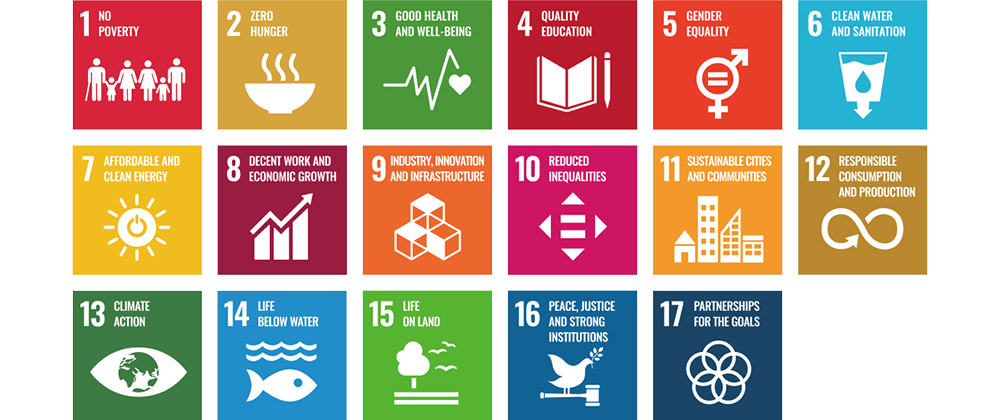
FujiClean believes that there is a deep connection between the future that we aspire to achieve through our corporate philosophy and the goals set forth by the SDGs. We will continue to promote understanding of the spirit of the SDGs and implement initiatives to achieve them.
Improving water environments
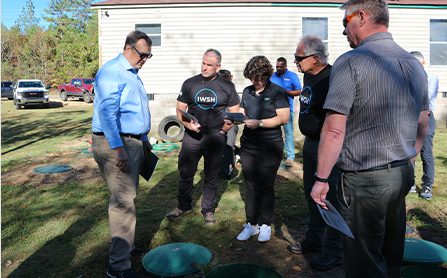
Alabama, USA: Participation in Black Belt Unincorporated Wastewater Program
In Lowndes County, Alabama, sanitation conditions were failing due to inadequate wastewater treatment facilities. To solve this problem, the Alabama State Department of Public Health launched a project in which FujiClean participated. The program addresses sanitation issues with a system that can provide advanced wastewater treatment.
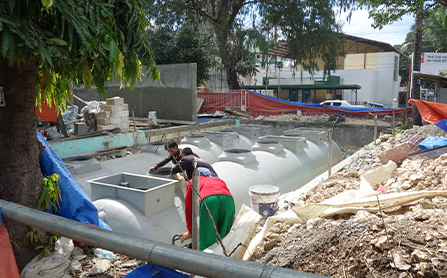
Bohol Island, Philippines: Introducing onsite commercial wastewater treatment system to resolve environmental and odor issues
FujiClean onsite wastewater treatment system, consisting of two PCN units, was installed in the old provincial government building on Bohol Island, located in the Visayas Islands. This system has improved the stench problems caused by wastewater treatment using conventional septic tanks. In addition, the discharged water is reused for watering the greenery, etc., improving the park environment as a restful area for the citizens.
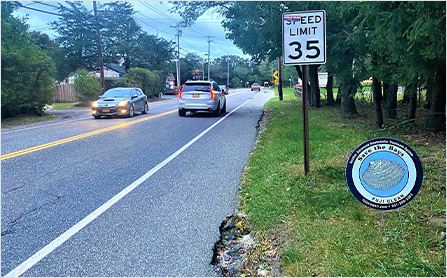
Long Island, Suffolk County, New York, USA: Participation in Septic Improvement Program
On Long Island, New York, the use of septic tanks and a rising population have led to severe pollution of coastal waters and a sharp decline in the catch of the area’s famous shellfish. Suffolk County has launched a project to tackle these issues and is promoting a plan to update wastewater treatment systems. FujiClean is participating in this project and helping efforts to protect the ocean.
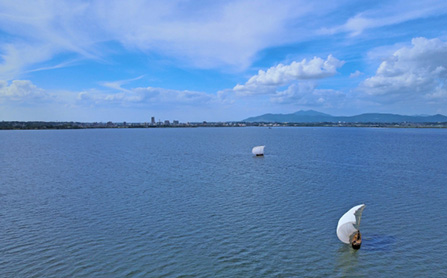
Onsite wastewater treatment systems to stop eutrophication of closed bodies of water such as lakes and inland seas
Removing nitrogen and phosphorus from domestic wastewater is vital to improving the water quality in closed bodies of water. In 2002, FujiClean developed the CRX Series onsite wastewater treatment system, which can simultaneously remove nitrogen and phosphorus. This system contributes to the sustainable improvement of water quality in lakes and marshes, including Lake Kasumigaura in Ibaraki Prefecture.
Contributing to building a social infrastructure
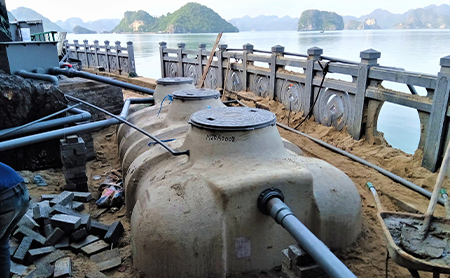
Introducing onsite wastewater treatment system at Tiptop Island in Ha Long Bay, Vietnam, a World Heritage Site
Ha Long Bay is a tourist area registered as a World Heritage Site. The area’s topography, with islands scattered throughout, makes installation of a wastewater treatment system impractical. Additionally, there were concerns about water pollution in the bay caused by industry and an increasing population. As a solution, a FujiClean onsite wastewater treatment system, which is a decentralized wastewater treatment system was installed. By treating wastewater in this manner, FujiClean is helping to maintain a social infrastructure and improve water quality.
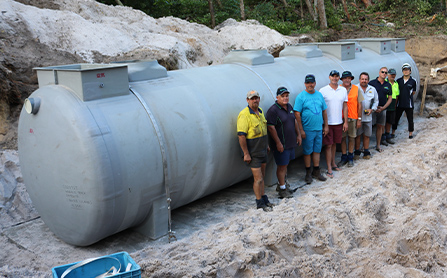
Introducing an onsite commercial wastewater treatment system at Fraser Island, Queensland, Australia
Fraser Island is registered as a World Heritage Site as the world’s largest sand island. Another FujiClean onsite commercial wastewater treatment system was installed at the K’Gari Campgrounds on the island. Wastewater from the campsite, where installation of traditional sewage lines is difficult, is treated to a water quality equal to general sewage lines and contributes to preserving the beautiful ocean and beach scenery.
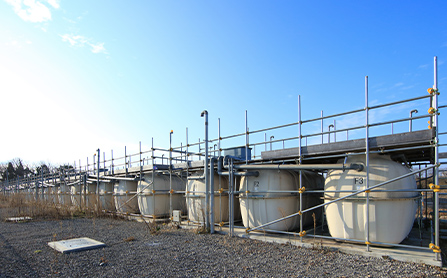
Onsite wastewater treatment system resilient to earthquakes
Because onsite wastewater treatment systems employ a decentralized treatment method, they can be restored quickly in a disaster. They are said to be especially resilient to earthquakes. These systems can be installed quickly and can be used as wastewater treatment facilities for emergency temporary housing. In the Great East Japan Earthquake and the Kumamoto Earthquake, FujiClean onsite wastewater treatment systems were installed at temporary housing sites, helping to provide hygienic living conditions.
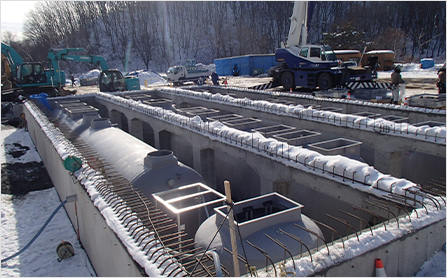
“Quick Sewage System Project” in Aomori Prefecture
The FGU model was introduced at a prefectural park in Aomori Prefecture as part of the “Quick Sewage System Project.” Sewage treatment systems can be installed according to population decline and regional characteristics. These “small sewage treatment systems” are helping to eliminate regional disparities in sewage treatment.
* Quick Sewage System Project: This initiative verifies and standardizes several sewage treatment methods that enable the low-cost, quick, and efficient introduction of sewage treatment facilities in response to local conditions such as population decline. FujiClean’s FGU model has been approved as a standard technology for a “factory-made, micro-scale treatment system (contact oxidation type).”
Environmentally-friendly Manufacturing
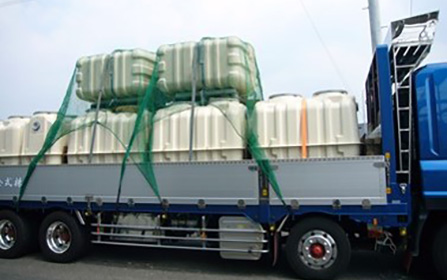
Initiatives to reduce greenhouse gas emissions
FujiClean tracks year-to-year changes in greenhouse gas emissions from manufacturing operations at our factories and uses this information to manage our corporate activities. The manufactured products are stacked in two layers when transported by truck. With this method, we can reduce the number of shipments and can reduce greenhouse gas emissions in our logistics.
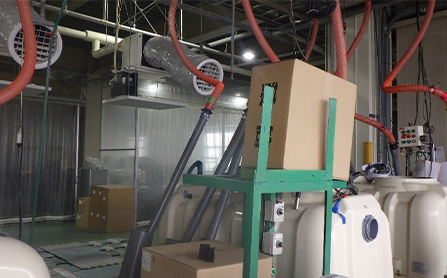
Creating a pleasant workplace environment
To reduce the workload at our manufacturing sites, we measure and quantify the workload for each factory operation, set target values, and periodically check them. Concerning heat, which is a high load, we are trying to improve the workplace environment and create a pleasant workplace by installing spot air conditioners and sheet shutters.
Improving job satisfaction

Personnel policy
Our personnel policy is formulated from six perspectives: recruitment, assignment, training, assessment, compensation, and work style. In the area of recruitment, for example, we “hire talented individuals regardless of age, gender, nationality, and whether they are new graduates or mid-career workers.” We actively welcome a variety of people as members of our company.

Careers
FujiClean employees can develop their careers according to their respective life stages by changing their employee classification or using our flexible retirement age policy, etc.
FujiClean respects the wishes of each employee. We are committed to providing various work options in our systems.
- * Employees can request a change in employee classification (national, area)
- * Flexible retirement age policy for employees between ages 61 and 65
- * Short-time work system for employees ages 60 and over, etc.













